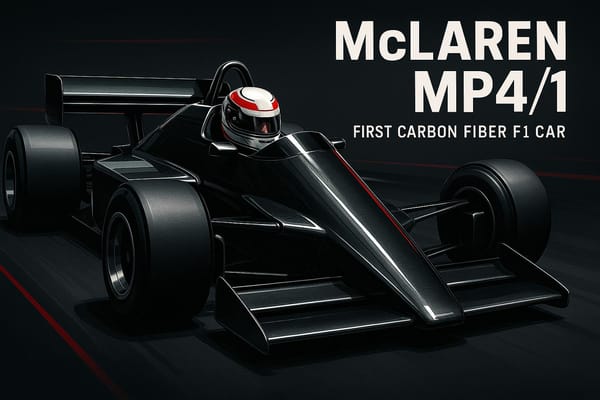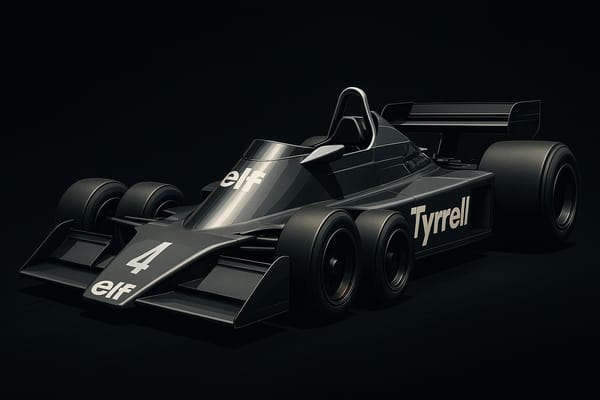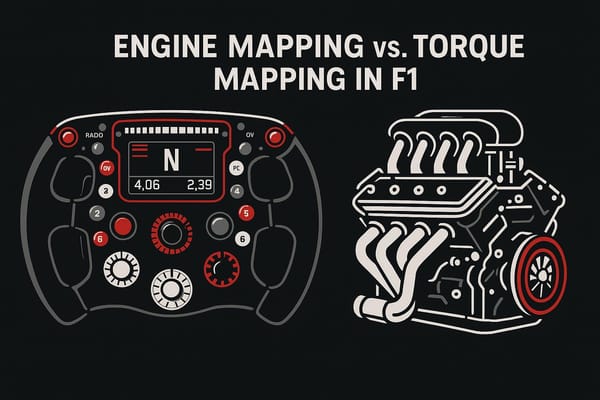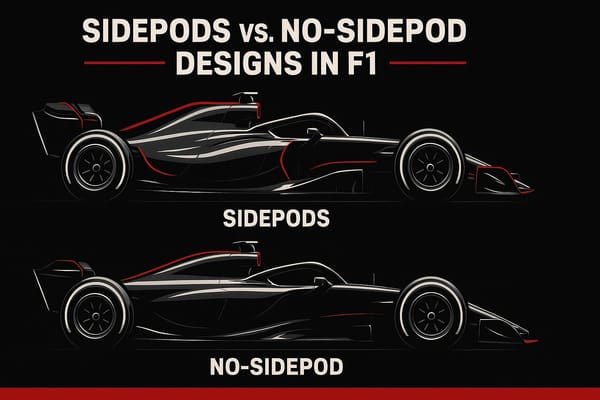Back to Montreal: 2025 Canadian Grand Prix Strategy, Track Facts & History
Explore the challenges and strategies of the 2025 Canadian Grand Prix at Circuit Gilles Villeneuve, from tire management to weather impacts.
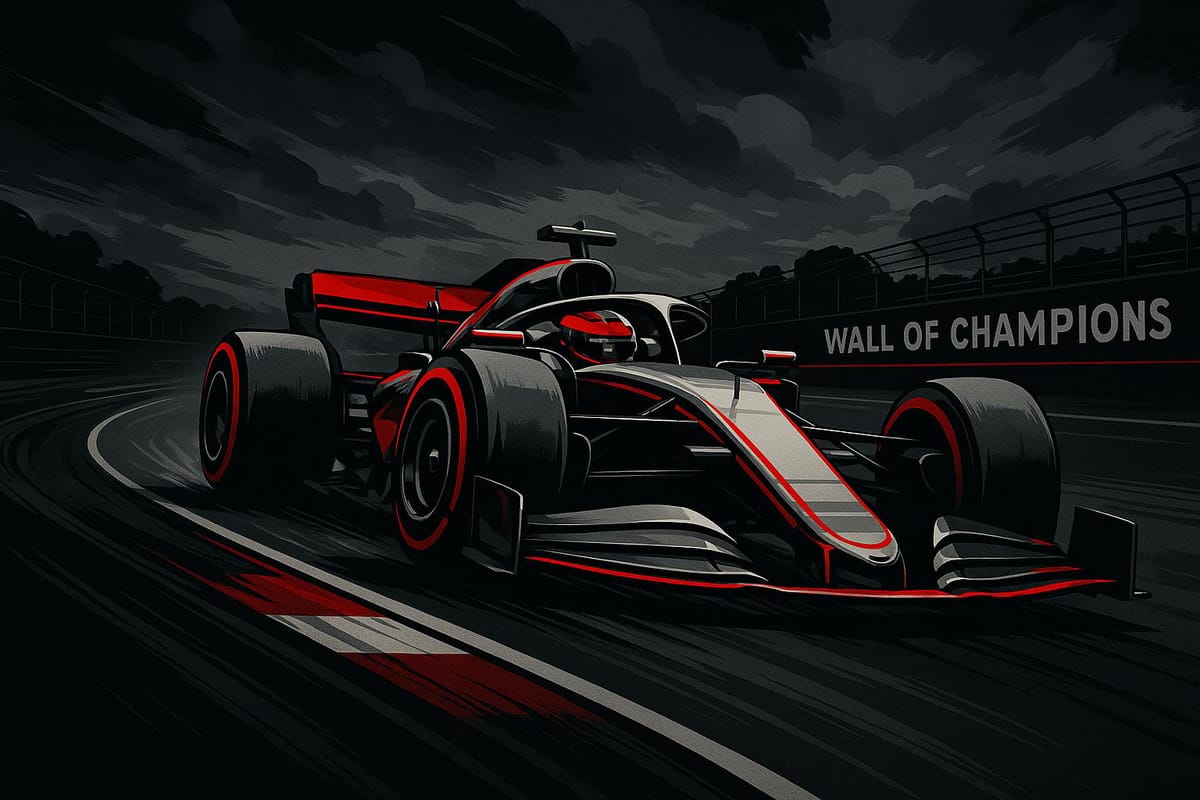
The 2025 Canadian Grand Prix at Montreal's Circuit Gilles Villeneuve promises intense action, thanks to its mix of high-speed straights, sharp corners, and unpredictable weather. With a resurfaced track, softer tire compounds (C4, C5, C6), and a history of frequent safety cars (83% chance), teams face a challenging weekend. Key factors include tire management, pit stop timing, and overtaking opportunities in DRS zones. Rain could disrupt plans, making real-time decisions crucial for success. The infamous Wall of Champions and evolving grip levels add to the drama, ensuring a test of both driver skill and team strategy.
What to Watch:
- Key Overtaking Zones: Turn 10 hairpin and Turn 13 chicane.
- DRS Areas: Three zones to boost passing chances.
- Weather Impact: Rain and fluctuating temperatures may influence outcomes.
- Pit Stop Precision: Timing and execution will be critical.
- Safety Cars: Likely to shake up race strategies.
This race is a blend of speed, precision, and tactical calls. Montreal's mix of challenges ensures no team can rest easy.
2025 Canadian Grand Prix: Preview and Predictions
Circuit Gilles Villeneuve: Track Layout and Features
The Circuit Gilles Villeneuve offers a thrilling mix of high-speed straights and technical corners, making it a standout track in the Formula 1 calendar. Originally constructed for Expo 67 and renamed in 1982 to honor Gilles Villeneuve, this semi-permanent circuit on Notre Dame Island has become one of the sport's most celebrated venues .
Track Layout and Key Corners
Spanning 2.71 miles (4.361 km) with 14 turns, the circuit tests both drivers and their cars with its demanding layout. It requires a finely tuned balance between straight-line speed and cornering performance .
One of its defining features is the 1,190-meter long flat-out section, which plays a crucial role in shaping aerodynamic strategies. Teams often lean toward moderate to low-downforce setups to maximize speed on the straights, while still ensuring enough grip to handle the tight chicanes that follow.
Turn 1 sets the tone for the lap, with cars braking hard from high speeds to about 81 mph (130 km/h) in fourth gear. At the other end of the spectrum, Turn 10 - the hairpin - is the slowest part of the track, where cars decelerate to roughly 46 mph (74 km/h) in second gear after approaching at around 180 mph (290 km/h) . Then there’s the infamous Wall of Champions at the final chicane (Turn 13), which has ended the races of many seasoned drivers. This section demands razor-sharp precision, especially during the intensity of late-race battles .
"You've got these long, long straights, but it's a bit like a go-kart track in how you have to throw the car over the curbs."
Lewis Hamilton’s words perfectly capture the circuit’s unique personality.
Adding to the challenge is the track's narrow design, with limited run-off areas and barriers that hug the racing line. This layout leaves little room for error, shaping driver behavior and influencing team strategies throughout the weekend. The combination of tight braking zones and fast exits creates prime opportunities for overtaking, rewarding drivers who can master precision and timing.
Overtaking Zones and DRS Areas
The circuit’s mix of long straights and sharp chicanes naturally lends itself to overtaking, supported by three well-placed DRS zones that amplify the action.
- DRS Zone 1: Detection occurs after Turn 5, with activation after Turn 7. This zone helps drivers close gaps and prepare for overtaking in later sections.
- DRS Zone 2: The longest DRS zone on the track, it begins with detection after Turn 9 and activation before Turn 12. Speeds here can exceed 213 mph (343 km/h), as demonstrated by Alexander Albon’s 2023 speed trap record. The braking zone into Turn 13 is a hotspot for overtaking.
- DRS Zone 3: Located on the pit straight, this zone starts after Turn 14 and sets up potential moves into the heavy braking area of Turn 1.
Key overtaking spots include the Turn 10 hairpin and the Turn 13 chicane, where late braking and speed differentials often determine success. These sections place enormous strain on brakes, adding another layer of difficulty for teams and drivers . Meanwhile, the pit lane adds about 19 seconds to a lap, a factor that teams must weigh carefully when deciding on tire changes versus maintaining track position.
Weather Conditions and Track Surface
Montreal’s unpredictable weather is a constant wildcard. Highs typically range from 72°F to 77°F (22°C to 25°C), with lows between 54°F and 61°F (12°C to 16°C). Rain is always a possibility, with chances hovering between 35% and 40%, while humidity levels can climb from 3% to 13% . Teams must prepare for a variety of scenarios to adapt to these shifting conditions.
The track itself, recently resurfaced, has a smooth, low-abrasion surface that provides less grip compared to permanent circuits. Since the circuit is only used during Grand Prix weekends, grip levels evolve significantly as rubber builds up over the sessions. While drivers may experience graining during Friday practice, the surface typically improves by race day, leading to faster lap times.
Although tire wear here is relatively low compared to more abrasive tracks, the constantly changing grip levels demand careful tire management and strategic flexibility . With the added unpredictability of weather, Montreal often becomes a race where tire strategy can make or break a team’s chances, sometimes proving just as crucial as outright car performance.
Canadian Grand Prix History and Patterns
The Circuit Gilles Villeneuve is one of Formula 1's most unpredictable and thrilling venues. With a rich history of iconic moments, it continues to shape race strategies and remains a favorite for both drivers and fans.
Major Race Moments from Past Years
Montreal's track has been the backdrop for countless career-defining moments. In 1978, Gilles Villeneuve claimed his first Grand Prix victory at the Circuit Île Notre Dame, a win so significant that the circuit was later renamed in his honor .
Fast forward to 1995, Jean Alesi celebrated an emotional first and only Grand Prix win on his 31st birthday, driving the legendary number 27 Ferrari . The track’s legacy of producing first-time winners continued with Lewis Hamilton's debut victory in 2007 , followed by Robert Kubica in 2008 - just a year after surviving a major crash at the same circuit . Daniel Ricciardo added his name to this list in 2014, securing his first Grand Prix win in Montreal .
The 2011 Canadian Grand Prix stands out as one of Formula 1's most dramatic races. Lasting over four hours, it remains the longest race in F1 history. Jenson Button delivered an unforgettable performance, overcoming numerous pit stops, safety car periods, and a last-lap pass to clinch victory. He later called it, "definitely my best race".
Montreal’s infamous "Wall of Champions" earned its name in 1999 when Ricardo Zonta, Damon Hill, Michael Schumacher, and Jacques Villeneuve all crashed into the final chicane during the same weekend . Even qualifying sessions have added to the drama, such as in 2024 when George Russell and Max Verstappen posted identical pole times, showcasing the intense competitiveness of modern F1.
Team and Driver Performance Data
Montreal’s unique challenges have consistently rewarded certain drivers and teams. Michael Schumacher and Lewis Hamilton share the record for most wins at the Canadian Grand Prix, each with seven victories. Schumacher’s dominance is further highlighted by an impressive 12 podium finishes at this venue.
| Driver | Country | Wins |
|---|---|---|
| Michael Schumacher | Germany | 7 |
| Lewis Hamilton | Great Britain | 7 |
| Nelson Piquet | Brazil | 3 |
| Jacky Ickx | Belgium | 2 |
| Jackie Stewart | Britain | 2 |
| Alan Jones | Australia | 2 |
| Ayrton Senna | Brazil | 2 |
| Sebastian Vettel | Germany | 2 |
On the constructor side, McLaren leads the pack with 13 wins, closely followed by Ferrari with 12. This near-equal split reflects how the circuit rewards different car designs and strategies over time.
Ferrari’s success in Montreal is amplified by the passionate support of the city's Italian community, creating an unforgettable atmosphere. Michael Schumacher once remarked:
"Montreal is a great city. It feels like the whole city gets involved and creates a really nice atmosphere".
Modern drivers also praise the circuit’s character. Lewis Hamilton called it:
"One of my favorite Grands Prix. One of my favorite fan experiences".
Max Verstappen added:
"I like the corners, you need to ride some curbs. It feels like a bit of a go-kart style. High speeds, big braking zones as well to master, so I always enjoy it".
While history highlights driver mastery, race-day variables like weather and track conditions keep teams on their toes, forcing constant strategic adjustments.
Safety Car Impact on Race Results
Montreal’s tight layout and unforgiving barriers make it one of the most safety car-prone circuits on the calendar. These frequent interruptions can completely change the dynamics of a race, often erasing time gaps and giving teams a chance to gamble on alternative strategies.
For teams starting at the back, a well-timed safety car can turn a slow start into a points-scoring finish. The 2024 Canadian Grand Prix demonstrated this perfectly, as Max Verstappen capitalized on race-day strategy to secure victory, despite setting the same qualifying time as George Russell.
Pirelli highlighted the circuit’s unpredictability:
"On top of that, the unpredictable and changeable weather is a factor to consider, a wildcard that's been known to disrupt the on-track action here, while fluctuating temperatures are a feature of the Montreal event".
With safety cars being such a frequent occurrence, teams must stay flexible, constantly reevaluating pit stop windows and adapting to real-time conditions. This ability to pivot is often the difference between a missed opportunity and a podium finish.
2025 Race Strategy Analysis
The unique challenges of Montreal's Circuit Gilles Villeneuve demand a sharp focus on tire performance and timing for the 2025 race. Teams will need to balance aggressive tire strategies with the ability to adapt to changing conditions, especially given the track's history of frequent interruptions and unpredictable weather.
This section dives into tire choices, team tactics, and the ongoing debate over one-stop versus two-stop strategies.
Tire Compounds and Pit Stop Plans
For 2025, Pirelli has introduced the C4, C5, and C6 compounds - a shift from last year’s selection. As explained in Pirelli’s weekend preview:
"For the third time this season, the softest trio of compounds will feature on track. That means, after appearing for the first time in Imola and again in Monaco, the C6 will be in use, alongside its closest relatives, the C5 as medium and the C4 as hard."
This softer lineup contrasts with the C3, C4, and C5 compounds used in 2024. The change is expected to increase graining, potentially leading to more frequent pit stops during the race.
The characteristics of Circuit Gilles Villeneuve further complicate tire performance. Pirelli notes:
"The Gilles Villeneuve Circuit is a track where the lateral forces exerted on the tyres are medium to low, while the longitudinal ones are a bit more severe, although not particularly high, because of the cars being subjected to strong deceleration followed by sharp acceleration"
Additionally, the circuit's short pit lane penalty makes reactive strategies essential, especially when safety cars compress the field and erase time gaps. Add Montreal's unpredictable weather into the mix, and teams face a complex puzzle.
Team-Specific Strategy Approaches
Each team is expected to tailor its approach to the 2025 Canadian Grand Prix based on car performance and championship goals.
- McLaren and Ferrari: These teams might lean toward conservative one-stop strategies, especially if the C4 hard compound shows promise during practice. Their strong tire management skills could allow them to maintain competitive lap times on older rubber.
- Red Bull: Reports suggest Red Bull has adjusted its setup to prioritize top speed. This could give them an edge on Montreal's long straights, where DRS plays a key role in both attacking and defending.
- Driver Factors: Max Verstappen’s three penalty points from the Spanish Grand Prix add another layer of complexity for Red Bull. A more cautious approach could help avoid further penalties.
Mario Isola, Pirelli’s competition director, underscored the importance of the race for understanding the new C6 tire:
"We are still waiting for Montreal, which will be an important race to better understand the C6 tire."
Friday practice sessions will be critical as teams gather data to fine-tune their strategies.
Strategy Comparison: One-Stop vs Two-Stop
The choice between a one-stop and two-stop strategy hinges on several variables, including tire degradation, track position, and race interruptions.
- One-Stop Strategy: This approach works best when tire degradation remains under 0.03 seconds per lap. In this case, teams often start on medium compounds and switch to the C4 hard tire for a long final stint. While it minimizes pit stops and helps maintain track position, it leaves teams vulnerable to undercuts if degradation increases.
Fernando Alonso summarized the risks involved:
"It's going to be a gamble always on which tyre to put on at which moment. Let's see if we get it right"
He added:
"We need to analyse a little bit the data and be very sharp. I think the right decision can gain you five seconds. The wrong decision, you are out of the race"
- Two-Stop Strategy: This option becomes more appealing when degradation exceeds 0.03 seconds per lap or when safety car periods reset the field. With the softer C6 compound in play, two-stoppers may gain an edge, as fresh tires can deliver better performance over shorter stints.
Here’s a quick breakdown of the pros and cons:
| Strategy Type | Advantages | Disadvantages | Best Conditions |
|---|---|---|---|
| One-Stop | Maintains track position; fewer pit windows; lower risk | Risk of degradation; vulnerable to undercuts | Low degradation, clean air, stable weather |
| Two-Stop | Better pace with fresh tires; more flexibility | Loss of track position; more pit stops | High degradation, safety car periods, mixed conditions |
The combination of softer tires, limited historical data on the C6 compound, and Montreal's unpredictable weather ensures that strategies will need to be flexible. Teams must stay sharp, ready to adapt to real-time race developments and competitor moves.
What to Watch During the 2025 Canadian Grand Prix
The 2025 Canadian Grand Prix is shaping up to be a thrilling battle, with three key factors likely to determine the outcome: overtaking skills, pit stop execution, and the ability to adapt strategies on the fly. In a sport where fractions of a second matter, every detail counts.
Overtaking zones will play a major role. Turn 10, in particular, will challenge drivers to make the most of subtle grip differences for successful overtakes. Meanwhile, the chicane at Turns 13–14 presents another opportunity, but it's a high-risk area. Drivers must stick to the designated rejoining route if they cut the chicane to avoid penalties.
Expect strategic use of DRS (Drag Reduction System). With three DRS zones available, timing will be everything. Cars set up for higher top speeds may gain an edge on straights, but they risk becoming unstable in corners. This trade-off could open the door for rivals with better mechanical grip to take advantage.
Pit stops will be a game-changer. Precision here is non-negotiable. As Formula One puts it:
"A few centimeters off can cost the race."
The current pit stop record - 1.82 seconds, set by Red Bull Racing in 2019 - remains a benchmark. Teams will need to carefully analyze tire wear and competitors' pit strategies to execute undercuts or overcuts at the perfect moment. For example, Sebastian Vettel’s undercut at the 2019 Singapore Grand Prix turned a third-place position into a race win by leveraging fresh tires against rivals on worn rubber. Add in the unpredictability of race interruptions, and pit strategy becomes even more critical.
Safety cars can completely flip the script. A well-timed safety car can cut the time lost during a pit stop from over 17 seconds to less than 10 seconds. Teams that can adapt quickly to these sudden opportunities will have a significant advantage.
The braking zones at Turn 10 and the chicanes are also worth keeping an eye on. Circuit Gilles Villeneuve demands exceptional braking stability and smooth traction out of corners. Drivers who can consistently nail their curb technique while maintaining control will have the best shot at fast lap times and overtaking opportunities.
Finally, tire degradation management will be critical for bold strategy calls. Teams must closely monitor how their tires wear during the opening stint, as early data will shape their decisions for the rest of the race. Those who can accurately interpret wear patterns in real time will gain a strategic edge, potentially making race-changing moves based on tire performance.
FAQs
How will the resurfaced Circuit Gilles Villeneuve affect tire strategies during the 2025 Canadian Grand Prix?
How the New Circuit Gilles Villeneuve Surface Could Shape the 2025 Canadian Grand Prix
The freshly resurfaced Circuit Gilles Villeneuve is set to shake up tire strategies for the 2025 Canadian Grand Prix. Thanks to smoother asphalt, teams are likely to see reduced tire degradation and less graining, which opens up the possibility of using softer tire compounds and running longer stints.
This smoother surface gives teams more room to experiment with strategy, potentially blending aggressive tactics with fewer pit stops. Still, race-day factors like weather and how the track evolves throughout the weekend will remain key in crafting the perfect game plan.
How do weather conditions impact team strategies during the Canadian Grand Prix in Montreal?
Weather's Impact on Strategies at the Canadian Grand Prix
Weather is a key factor that influences team strategies at the Canadian Grand Prix. When the track is dry, teams prioritize speed, opting for aggressive setups, precise tire selections, and fuel strategies aimed at pushing performance to the limit. But when rain or unpredictable weather rolls in, everything changes. Teams must pivot quickly, swapping to intermediate or wet tires and adopting a more cautious approach to navigate the slippery surface safely.
Montreal's famously unpredictable weather keeps teams on their toes. Over the years, sudden downpours have turned races on their heads, creating unexpected twists and thrilling outcomes. In such conditions, having accurate weather forecasts and the ability to adapt in real time becomes absolutely crucial for achieving success on race day.
Why is the Wall of Champions at Circuit Gilles Villeneuve so challenging for F1 drivers?
The Wall of Champions: A Legendary Challenge at Circuit Gilles Villeneuve
The Wall of Champions at Circuit Gilles Villeneuve is notorious for testing the limits of even the most skilled drivers. Found at the exit of the final chicane, this infamous wall earned its name after several World Champions - Damon Hill, Michael Schumacher, and Jacques Villeneuve - crashed into it during the 1999 Canadian Grand Prix.
What makes this corner so treacherous is its tight design and the wall’s unforgiving proximity. Drivers aiming for top speed as they approach the start/finish straight have almost no margin for error. This combination of precision and risk has cemented the Wall of Champions as one of the most iconic and demanding features on the F1 circuit, pushing even the best to their limits.

